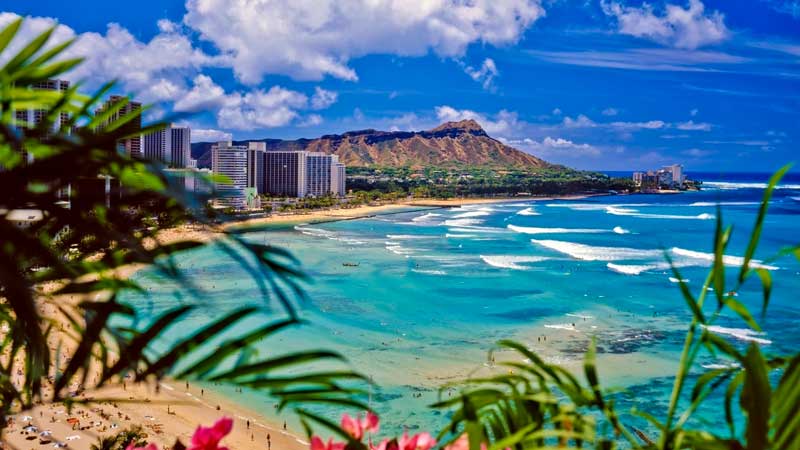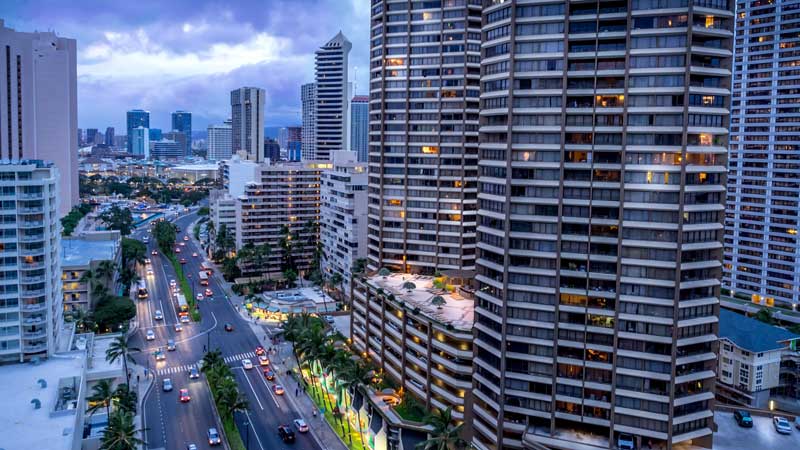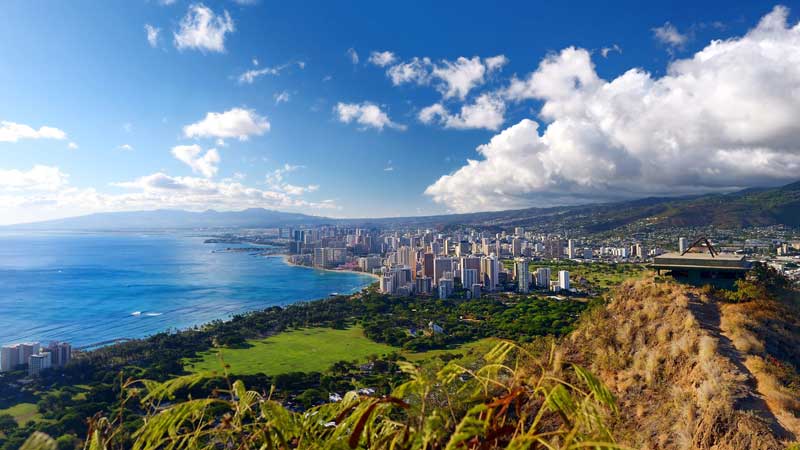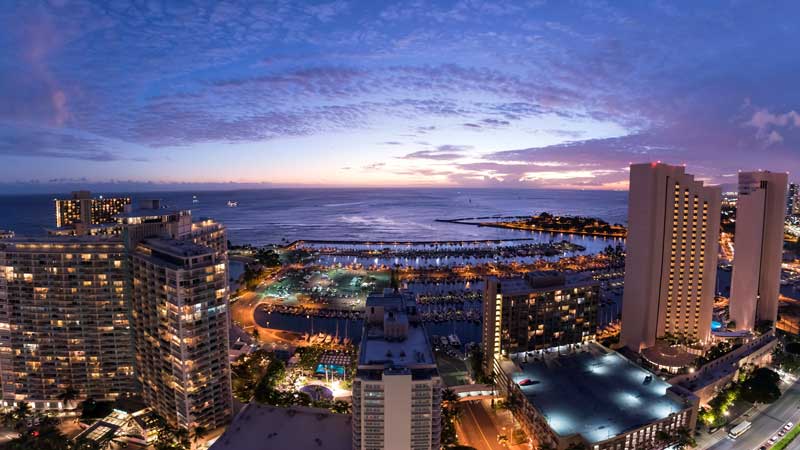When searching for a home in paradise, one of the biggest questions buyers ask is: “Are mortgage rates in Hawaii different from the rest of the U.S.?” The short answer is yes and no. While Hawaii mortgage rates often move in step with national trends, several unique factors—like property type, loan program, and even non-warrantable condos—can influence what you’ll pay.
In this guide, we’ll cover everything you need to know about mortgage rates in Hawaii, how they compare to mainland rates, and what factors affect your approval. We’ll also share how to use a mortgage calculator that Hawaii buyers trust to estimate your monthly payment and find the right loan.
Are Hawaii Mortgage Rates Different from Mainland Rates?
Mortgage rates in Hawaii are tied to the same national market forces as everywhere else in the U.S.—mainly the Federal Reserve’s policies, inflation, and the bond market. However, there are Hawaii-specific variables:
- Higher Property Prices
Hawaii’s median home price is significantly higher than the national average. That means larger loan balances, which can push buyers into jumbo loan territory. Jumbo loans often come with slightly higher interest rates or stricter qualifications. - Loan Types Unique to Hawaii
Non-warrantable condos (common in resort areas like Waikīkī or Maui) may carry higher rates because they’re considered riskier to lenders. - Local Lending Competition
Some local credit unions and lenders in Hawaii may offer special loan programs, affecting how competitive Hawaii mortgage rates can be compared to big mainland banks.
In general, you’ll see Hawaii home loan rates very close to mainland averages, but property type and loan size often shift the numbers.
What Factors Affect Mortgage Rates in Hawaii?
When lenders set your Hawaii mortgage loan rate, they consider both personal and property-specific factors:
- Credit Score
Your credit score plays a major role. A borrower with a 760+ score could see significantly lower HI mortgage rates compared to someone in the mid-600s. - Loan Type
- Conventional loans: Standard loans tied to Fannie Mae and Freddie Mac limits.
- Jumbo loans: Needed when the loan exceeds conforming limits (common in Hawaii). These may come with slightly higher rates.
- VA loans: Available to veterans and service members, often with lower Hawaii home interest rates and no down payment.
- FHA loans: Flexible qualification but with added mortgage insurance.
- Property Type
- Single-family homes usually qualify for the lowest rates.
- Condos can carry added risk depending on the building’s financial health.
- Non-warrantable condos (where investor ownership is high, or the HOA has legal/financial red flags) often require specialized lenders and higher rates.
- Loan-to-Value (LTV) Ratio
The size of your down payment matters. A higher down payment (lower LTV) usually secures better rates. - Debt-to-Income Ratio
Lenders want to see that your income can comfortably handle your mortgage and other debts. - Market Conditions
Even if you’re the perfect borrower, Hawaii mortgage rates rise and fall with national economic shifts.
Average Hawaii Mortgage Rates vs. National Averages
While exact numbers change daily, historically:
- Conforming loan rates in Hawaii stay very close to national averages.
- Jumbo loans (common in Hawaii due to high home values) sometimes carry a small premium.
- Refinance mortgage rates Hawaii borrowers get typically align with purchase rates, but timing can make a big difference.
Tip: Always compare at least three lenders (local, regional, and national) to get the best offer.
Tools: Hawaii Mortgage Calculator
Before you shop for homes, use a Hawaii mortgage calculator to estimate your monthly payment. Input:
- Home price
- Down payment
- Interest rate
- Loan term
- Property taxes & insurance
This gives you a realistic idea of what you can afford. Many calculators also include VA loan options for Hawaii buyers.
Refinance Mortgage Rates in Hawaii
Refinancing can make sense if:
- Rates have dropped since your original loan.
- You want to shorten your loan term.
- You’re consolidating debt or removing PMI.
Because Hawaii homes hold strong equity, refinancing often unlocks financial flexibility. Keep in mind that refinance mortgage rates Hawaii homeowners qualify for will still depend on credit score, loan type, and current market trends.
Spotlight: Non-Warrantable Condo Loans in Hawaii
Condos make up a huge share of Hawaii housing. However, many are classified as non-warrantable, meaning they don’t meet Fannie Mae or Freddie Mac requirements.
Common reasons:
- More than 50% investor ownership.
- HOA facing litigation.
- Incomplete new developments.
If you’re eyeing a condo in Honolulu, Maui, or Kona, you may need a non-warrantable condo loan. These usually:
- Require higher down payments.
- Carry higher Hawaii mortgage loan rates.
- Are only offered by select lenders with portfolio products.
Tip: Work with a Hawaii-based loan officer familiar with local condo rules to avoid surprises.
Real-World Hawaii Mortgage Scenarios
To illustrate how rates and loan types differ, let’s look at three borrower examples:
Scenario 1: VA Loan for a Service Member in O‘ahu
- Home Price: $850,000
- Loan Type: VA loan, $0 down
- Rate Range: Often lower than conventional, no PMI required
- Result: Lowest payment option for qualified military buyers
Scenario 2: Jumbo Loan in Maui
- Home Price: $1.4M
- Loan Type: Jumbo conventional loan
- Rate Range: Slightly higher than conforming loans
- Result: Larger reserve requirements and stricter credit standards
Scenario 3: Non-Warrantable Condo in Waikīkī
- Home Price: $600,000
- Loan Type: Non-warrantable condo loan
- Rate Range: 0.5%–1% higher than a standard condo loan
- Result: Higher rate but still achievable with the right lender
These examples highlight why using a Hawaii mortgage calculator and comparing multiple loan programs is critical.
Step-by-Step Process to Get a Mortgage in Hawaii
- Check Your Credit – Get a free report and correct errors.
- Get Pre-Approved – Lenders will review your income, credit, and assets.
- Compare Rates – Look at at least three lenders (local bank, credit union, national lender).
- Run Scenarios in a Hawaii Mortgage Calculator – Test rates, terms, and down payments.
- Choose Your Loan Type – Conventional, VA Home Loan, FHA, Jumbo, or non-warrantable condo loan.
- Submit Full Application – Provide documents (W-2s, tax returns, bank statements).
- Underwriting & Appraisal – Lender reviews risk, property value, and condo status if applicable.
- Rate Lock – Once approved, lock your Hawaii home interest rate.
- Closing – Sign documents and officially take ownership.
This process can take 30–45 days, depending on the loan type and property.
Hawaii Mortgage Market Outlook
Hawaii’s real estate market is historically resilient due to limited land, high demand, and global appeal. While interest rates rise and fall nationwide, Hawaii often sees sustained buyer demand.
If you’re considering buying or refinancing, now is the time to explore your options. With rates moving daily, waiting could cost you—or save you—thousands.
Final Thoughts: Hawaii Mortgage Rates
To recap:
- Hawaii mortgage rates usually track national averages but can vary due to jumbo loans, condos, and unique local lending conditions.
- Your personal financial profile (credit, income, down payment) plays a huge role.
- Use tools like a Hawaii mortgage calculator to plan wisely.
- For condos, be prepared to navigate non-warrantable condo loans if needed.
- Whether you’re buying your first home, refinancing, or investing, working with a local expert ensures you get the best Hawaii home loan rates available.
FAQs About Hawaii Mortgage Rates
1. Are Hawaii mortgage rates higher than mainland rates?
Generally, they’re very close, but Hawaii’s higher home prices push more buyers into jumbo loans, which sometimes come with slightly higher rates.
2. What is a non-warrantable condo loan?
It’s a loan for condos that don’t meet Fannie Mae/Freddie Mac requirements—common in resort areas. They typically require higher down payments and carry higher interest rates.
3. Can I use a VA loan in Hawaii?
Yes! Hawaii has one of the highest concentrations of VA loan usage in the country. VA loans often offer the lowest mortgage loan rates available in Hawaii.
4. How do I calculate my mortgage payment in Hawaii?
Use a Hawaii mortgage calculator to input price, down payment, loan type, and interest rate. It’s the easiest way to compare scenarios.
5. Should I refinance my Hawaii home loan?
If rates are lower than when you bought, or if you want to remove PMI or shorten your loan term, refinancing can save you thousands. Always compare refinance mortgage rates that Hawaii lenders offer before deciding.
Looking to find your best rate? Whether you’re curious about mortgage calculator tools in Hawaii, exploring refinance mortgage rates in Hawaii, or considering a condo purchase, I can guide you through every step.
Contact Elias today to get personalized Hawaii mortgage loan rates and a free consultation.









